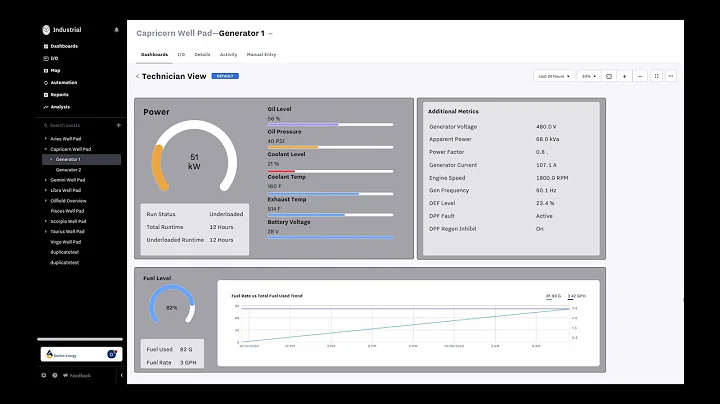Unleash Hidden Power: Simple Mods for Cast Iron Heads
Table of Contents
- Introduction
- The Power of Simple Mods on Cast Iron Heads
- Benefits of Using Iron Heads
- Cosmetic Enhancements for Cast Iron Heads
- Important Machining Steps for Optimal Performance
- Enhancing Scavenging Action
- The Importance of Exhaust Seats
- Area Ruling the Exhaust Ports
- Radiusing the Intake and Spark Plug Areas
- Valve Modifications for Improved Flow
- The Power of Chamber Modifications
- Wrapping Up and Next Steps
Introduction
In this article, we will explore the often overlooked topic of simple modifications that can unleash extra power from cast iron heads, specifically focusing on the early 289 and 302 heads. While aluminum heads may be a popular choice for many, there are several reasons why iron heads remain a viable option, especially for vintage racing or engine restoration projects. We will delve into a range of cosmetic and performance enhancements that can be made to these heads, helping you achieve optimal power and a stealthy, stock appearance.
The Power of Simple Mods on Cast Iron Heads
When it comes to increasing power output, many people immediately turn to expensive aftermarket parts and complex modifications. However, there is incredible untapped potential in simple modifications to cast iron heads, especially those found in early 289 and 302 engines. These heads often go overlooked when discussing performance upgrades, but they can deliver significant gains without breaking the bank.
Benefits of Using Iron Heads
Before diving into the various modifications, it's important to understand the benefits of using iron heads. While aluminum heads offer advantages such as weight savings and improved heat dissipation, there are several scenarios where iron heads are the preferred choice. For vintage racing, specific time periods may require the use of period-correct heads. Similarly, if you're restoring an engine, using heads from the same era can enhance the authenticity and value of your project. Iron heads are also a popular choice for street racers looking for a stealthy appearance while still enjoying formidable power under the hood.
Pros of Iron Heads:
- Period-correct for vintage racing
- Enhance authenticity for engine restoration
- Stealthy appearance for street racers
Cons of Iron Heads:
- Heavier than aluminum heads
- Inferior heat dissipation properties
Cosmetic Enhancements for Cast Iron Heads
When working with cast iron heads, it's essential to consider both performance and aesthetics. While the performance enhancements will be covered in detail later, let's start by addressing the cosmetic aspect of these heads. Due to their age, many 289 and 302 heads might appear worn and dull. If you're restoring an engine or looking for an eye-catching appearance, investing some time in cosmetic enhancements is well worth it.
One recommendation is to use electric Armature enamel to give the heads a clean and polished look. Not only does this improve the appearance for visual inspections and photography, but it also seals the casting, preventing corrosion and ensuring long-lasting beauty. To apply the enamel, ensure a clean surface by shot blasting the heads and then lightly fog the enamel on. Be sure to apply a thin coating and allow it to cure for a few days, ideally by placing the heads on a radiator at around 160°F.
Important Machining Steps for Optimal Performance
Before delving into the specific modifications, it's crucial to highlight some important machining steps that should be taken in order to achieve optimal performance from the cast iron heads. These steps include machining the guide bosses to accommodate good valve seals, ensuring proper clearance for valve lift to prevent spring coil bind, and machining the spring seats for screw-in studs.
Additionally, the bosses can be machined lower to accommodate guide plates, or the slots can be used instead. Carefully consider the requirements of your particular setup and consult with an experienced machinist for best results. Other enhancements, such as grinding the oil drainback path and modifying the intake manifold face to improve water flow, can also contribute to overall performance gains.
Enhancing Scavenging Action
One of the key areas where simple modifications can have a significant impact is in enhancing scavenging action. By flattening out the area just before the exhaust valve seat, a scavenge plateau is created. This modification results in greatly enhanced scavenging action at the end of the exhaust stroke, allowing for better airflow and improved power output. While the gains may seem minor, they translate into noticeable performance improvements, including an extended shift point on the track.
The Importance of Exhaust Seats
Another crucial modification involves the exhaust seats. While cup car engines often use 45 or 50-degree seats, these cast iron heads benefit from 40-degree seats. By cutting the exhaust seats to 40 degrees, the cylinder can blow down faster, resulting in improved exhaust flow. This modification enables the use of a single-pattern cam for street and street strip engines, eliminating the need for a more complex dual-pattern cam. This simplifies cam selection and reduces costs while still delivering impressive power gains.
Area Ruling the Exhaust Ports
To further optimize exhaust flow, area ruling the exhaust ports can yield significant benefits. Area ruling involves using a flow ball to determine areas where the cylinder wall needs to be cut back to provide additional clearance. This allows for a smoother flow of gases during the initial opening of the valve, leading to more efficient exhaust evacuation. By utilizing area ruling techniques, the exhaust ports in the vicinity of the seat become highly optimized, resulting in improved scavenging.
Radiusing the Intake and Spark Plug Areas
Optimizing flow characteristics within the cylinder head extends beyond the exhaust ports. It's essential to consider the intake and spark plug areas as well. By radiusing the sharp edges in these areas, airflow is enhanced, resulting in increased flow at low lift and improved low-speed torque. Additionally, radiusing the spark plug hole allows for more efficient filling of the quench area during the compression stroke, reducing pumping losses and further improving overall performance.
Valve Modifications for Improved Flow
Valve modifications play a crucial role in maximizing flow efficiency within the cylinder head. By radiusing the front face of the valve where it enters the chamber, airflow is further improved during the overlap period. This modification allows exhaust molecules to be squeezed out and flow around the valve, preventing interference with the fresh charge entering the combustion chamber. Moreover, this valve modification decreases valve temperature, leading to improved durability and reliability.
The Power of Chamber Modifications
Chamber modifications should not be overlooked when seeking to unlock the potential of cast iron heads. By optimizing chamber design, significant power gains can be achieved. The simple chamber mods discussed in this article, such as creating a scavenge plateau and using area ruling techniques, can increase power output by up to 20 horsepower. These enhancements extended the shift point by approximately 500 RPM, making a notable difference on the track.
Wrapping Up and Next Steps
In conclusion, simple modifications to cast iron heads can unleash substantial power gains, making them a viable option for enthusiasts seeking optimal performance without the high cost of aftermarket parts. Cosmetic enhancements, crucial machining steps, scavenge plateau creation, exhaust seat modifications, area ruling, and valve and chamber optimizations all contribute to increased power and improved engine performance. While the modifications may seem small on their own, when combined, they can result in significant enhancements. For those interested in further exploring the technical aspects of cylinder head design and porting, attending one of David Vizard's seminars is highly recommended.
Highlights
- Simple modifications to cast iron heads can unlock extra power on a budget.
- Iron heads offer advantages for vintage racing, engine restoration, and stealthy street racing.
- Cosmetic enhancements, such as using electric Armature enamel, improve appearance and prevent corrosion.
- Essential machining steps, including guide boss machining and spring seat modifications, are necessary for optimal performance.
- Scavenging action can be significantly enhanced by creating a scavenge plateau.
- Cutting exhaust seats to 40 degrees improves flow and eliminates the need for dual-pattern cams.
- Area ruling the exhaust ports optimizes flow and improves scavenging.
- Radiusing intake and spark plug areas enhances airflow and improves low-speed torque.
- Valve modifications, including radiusing the front face, improve flow and reduce valve temperature.
- Chamber modifications, such as creating a scavenge plateau, deliver substantial power gains.
FAQ
Q: Can these modifications be applied to other types of heads?
A: While this article focuses on cast iron heads, some of the principles discussed can be applied to other types of cylinder heads as well. However, it's important to consult with an expert or follow specific instructions tailored to the particular head you are working with.
Q: Are these modifications suitable for all engine builds?
A: The modifications described in this article are primarily targeted towards street and street strip engine builds. It's important to assess your specific engine requirements, intended use, and consult with professionals to ensure the modifications are appropriate for your specific setup.
Q: Do these modifications require professional machining?
A: While some modifications, such as guide boss machining and spring seat modifications, require professional machining, others can be done with careful DIY work. However, it's crucial to have the necessary knowledge, skills, and tools to perform the modifications accurately. When in doubt, seek assistance from experienced professionals.
Q: Will these modifications void engine warranties?
A: Any modifications made to an engine have the potential to void warranties. It's important to consult with the manufacturer or warranty provider to understand the specific terms and conditions regarding modifications.







